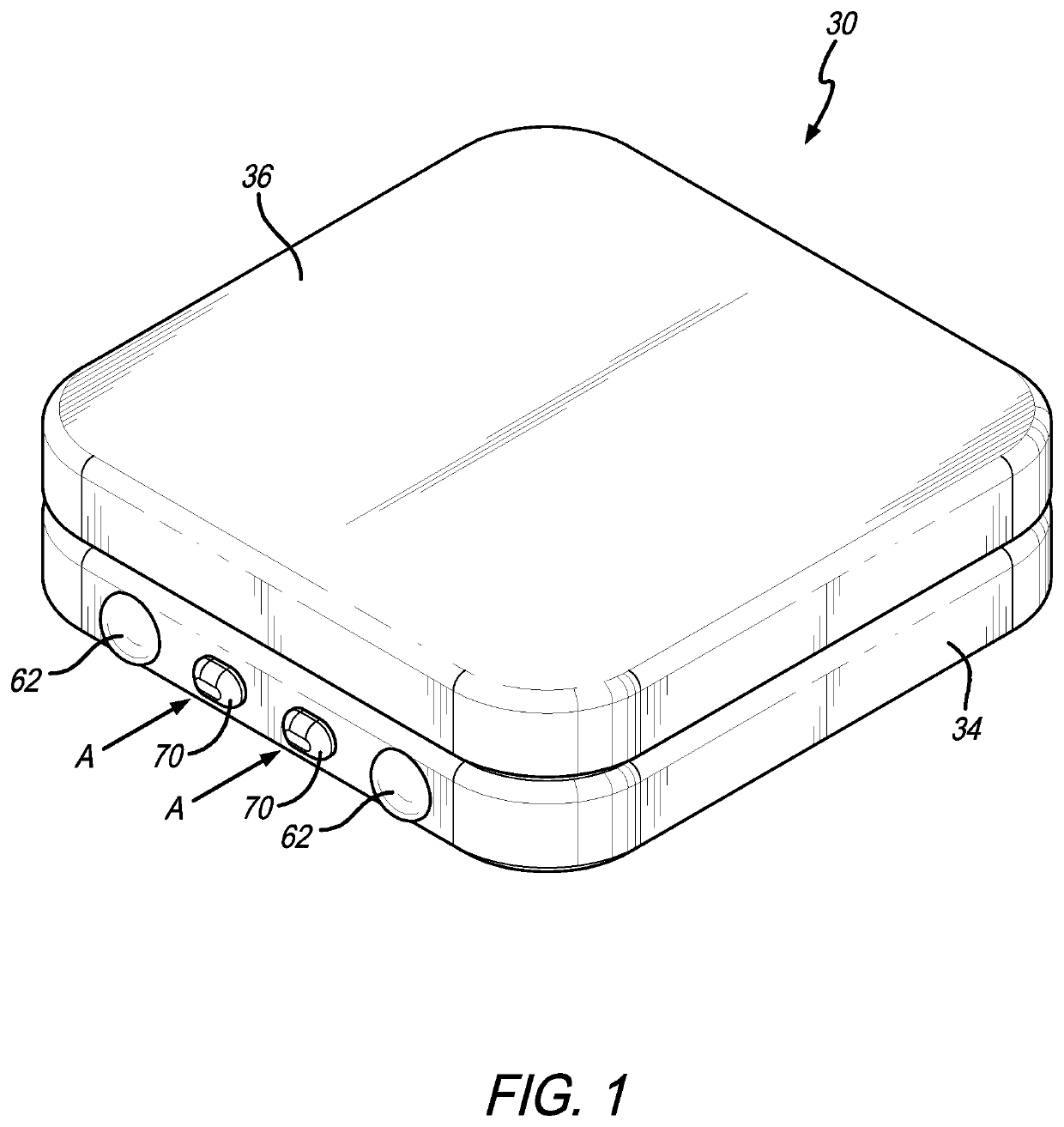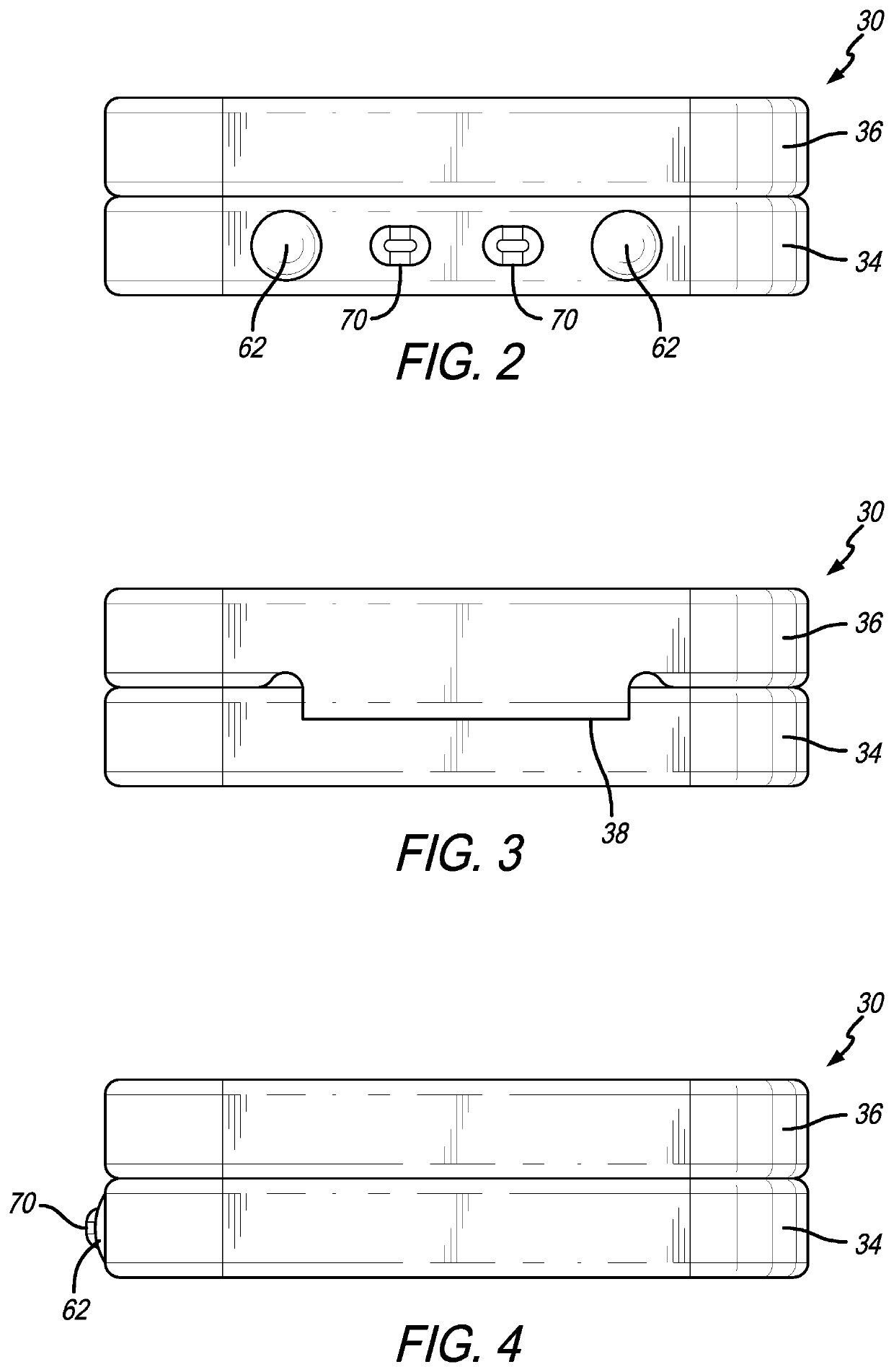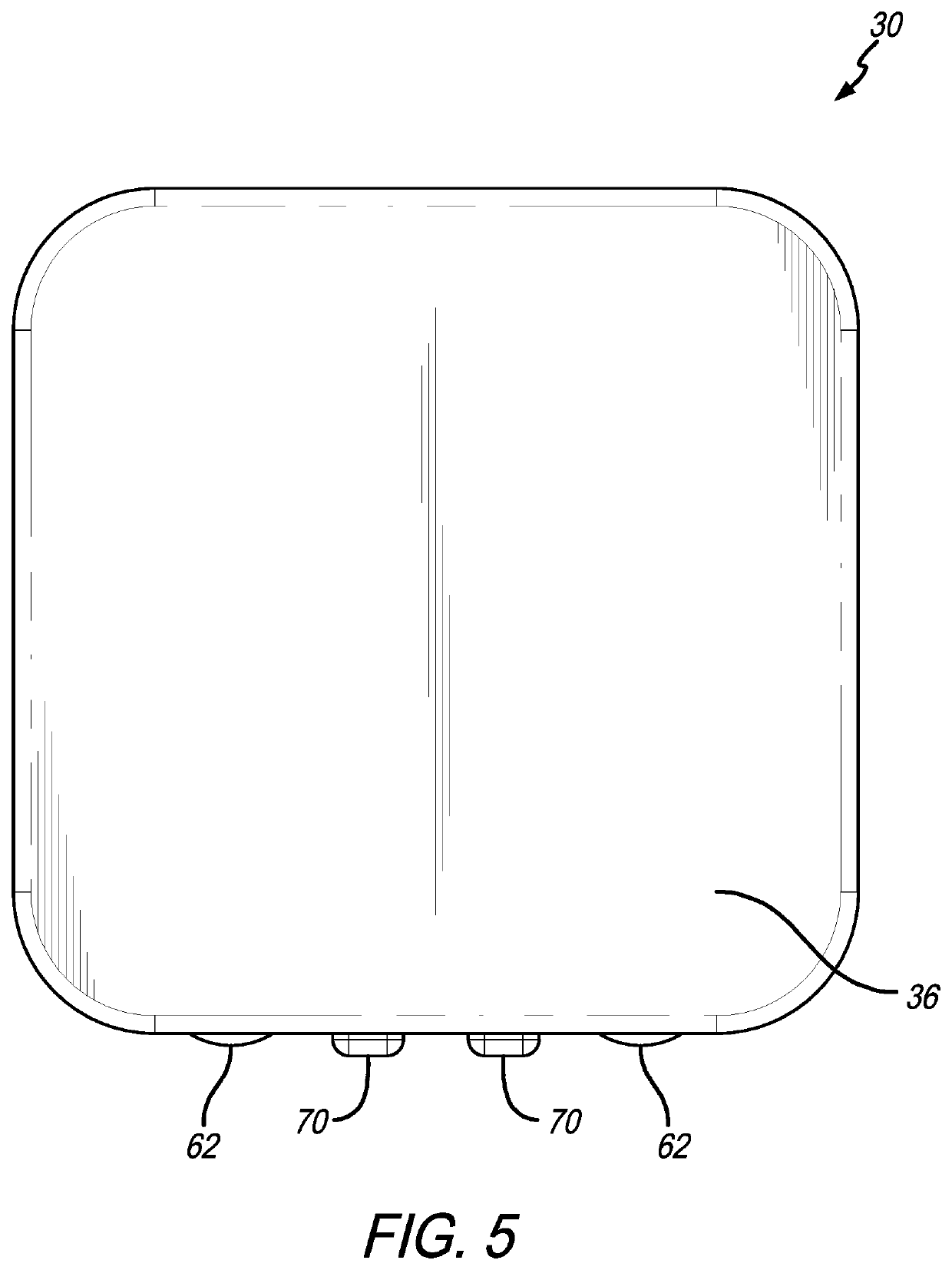Child-resistant containers and packaging
a technology for containers and packaging, applied in the field of child-resistant containers and/or packaging, can solve the problems of users having to use both hands, difficult (if not impossible) for children under a certain age to open containers or packages, and frustration for younger children to comparatively do the same, so as to reduce the cost of longer-term ownership
- Summary
- Abstract
- Description
- Claims
- Application Information
AI Technical Summary
Benefits of technology
Problems solved by technology
Method used
Image
Examples
Embodiment Construction
[0044]As shown in the exemplary drawings for purposes of illustration, the present invention for a child-resistant container and / or package is generally illustrated with respect to one embodiment of a child-resistant tin 30 in FIGS. 1-12 and with respect to a second embodiment of a child-resistant box 32 in FIGS. 13-28. As disclosed in more detail herein, the child-resistant tin 30 and the child-resistant box 32 are particularly ideal for both dispensary compliance purposes at the point of sale and for safe home use as each provides a container for continued safe storage after purchase.
[0045]More specifically, the child-resistant tin 30 illustrated, e.g., in FIG. 1, includes a storage container 34 coupled to a lid 36 about a hinge 38. In general, as illustrated in FIGS. 1-9, the storage container 34 and the lid 36 are each generally of a rectangular shape, although a person of ordinary skill in the art would recognize that the shape may vary (e.g., square, circular, etc.). Each of t...
PUM
 Login to View More
Login to View More Abstract
Description
Claims
Application Information
 Login to View More
Login to View More - R&D
- Intellectual Property
- Life Sciences
- Materials
- Tech Scout
- Unparalleled Data Quality
- Higher Quality Content
- 60% Fewer Hallucinations
Browse by: Latest US Patents, China's latest patents, Technical Efficacy Thesaurus, Application Domain, Technology Topic, Popular Technical Reports.
© 2025 PatSnap. All rights reserved.Legal|Privacy policy|Modern Slavery Act Transparency Statement|Sitemap|About US| Contact US: help@patsnap.com



